| Columns Retired Columns & Blogs |
Great to see Stereophile nominations for products priced within the reach of most households in every category. Hallelujah.
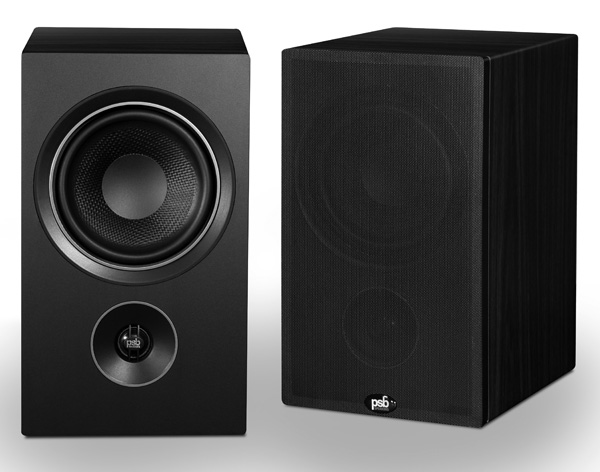
PSB Alpha P5 loudspeaker
I have reviewed many cost-no-object loudspeakers over the years. But as I wrote in my review of this little gem: "While any competent engineer can design a superb loudspeaker if allowed an unlimited bill of materials, the true test is being able to produce a great- sounding, budget-priced speaker out of parts that cost a mere handful of dollars." Yes, there are many speakers that offer greater bass extension, dynamic range, and imaging precision, but at prices that range from five to 500 times as expensive as the Alpha P5. PSB's Paul Barton shows that you can get enough in these performance areas to satisfy at a real-world price.—John Atkinson
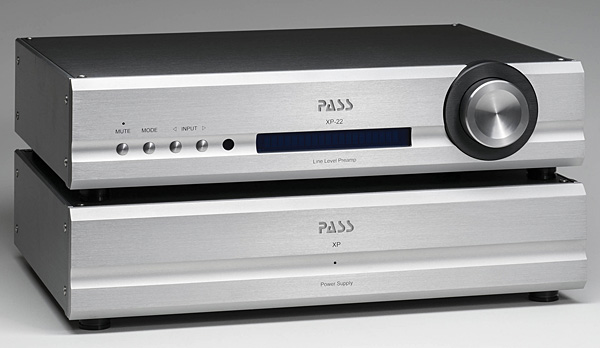
Pass Laboratories XP-22 preamplifier
This two-box preamplifier may have just four tiny buttons on its front panel—and one large, smooth volume knob—but it pushes all of mine. (All of my buttons, that is, in case that wasn't clear.) Its rugged, no-nonsense look appeals to me, and it does that uncanny thing that good preamplifiers do: It somehow makes the music sound better, even if it doesn't make sense that an extra active stage in the signal chain makes the music sound better. Finally, it is—at least by hi-fi standards—sanely priced. And I do love that big, ultra-smooth volume knob.—Jim Austin
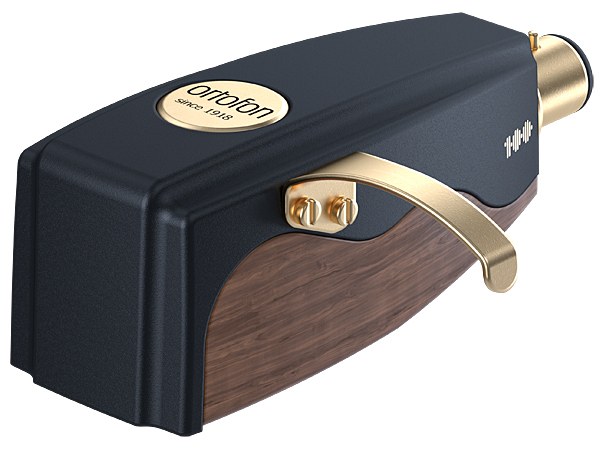
Ortofon SPU Century pickup head
The limited-edition SPU Century pickup head departs from tradition in a number of ways, most notably its use of a Shibata (rather than spherical) stylus tip—a distinction that, if truth be told, led hidebound me to prejudge the Century as something I might wind up liking but would surely never love.
I was wrong. In my review, I described the Century as "the most vintage-sounding—the most SPU-sounding—of the modern SPUs that I've heard." Today, after living with the review sample for a few more months, I would call it, simply, the best of the modern SPUs.—Art Dudley
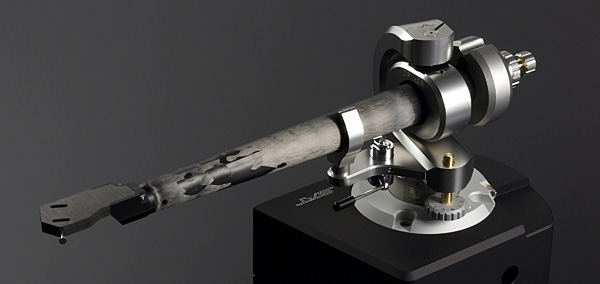
Swedish Analog Technologies CFL-09 tonearm
I realize the SAT CF1-09 is hideously expensive at $53,000, but as good as was the original I reviewed a few years ago, the CF1-09 is simply that much better, and that is mighty, impossibly good. Playing hi-rez files recorded using the CF1-09 at shows or stores is too much fun. People familiar with whatever track is playing can hear it pretty quickly. The cost probably hindered its getting votes, but the SAT is easily my product of the year.—Michael Fremer

Sutherland Little Loco phono preamplifier
History will look back on the Sutherland Little Loco as having defined an inflection point in the evolution of high- end audio. Just as the iPhone wasn't the first smartphone but the first one that mattered, the Little Loco isn't the first current-mode phono preamp, but it is the first one that matters.—Brian Damkroger

SVS SB-3000 powered subwoofer
The sub-$1000 SB-3000 wins because it incorporates the technology of SVS's flagship SB16-Ultra, is user-friendly, produces highly musical, pitch-perfect, floor-shaking bass, and offers wireless connectivity and total smartphone control from my listening room seat.—Larry Greenhill
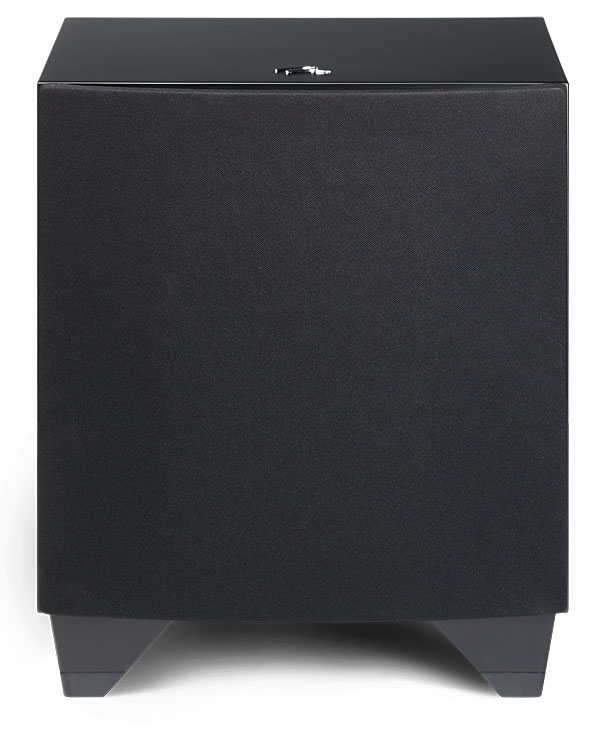
MartinLogan Dynamo 800X powered subwoofer
When you're a fan of a prodigious, but clean and accurate, bottom end, choosing a value-packed powered sub with built-in room correction is a no-brainer. At $800 each, you can start with one, and when your budget allows, add another. Your music will thank you!—Jon Iverson
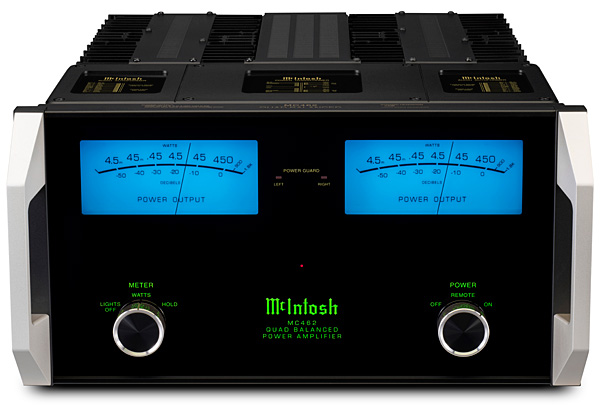
McIntosh MC462 power amplifier
McIntosh Laboratories is on a roll. Building on their lengthy experience, and incorporating recent technical improvements, the mighty MC462 puts out 450Wpc into 2, 4, or 8 ohm speaker loads with authority—and stellar technical measurements. The list price is fair for the outstanding quality involved. A great music-maker.—Sasha Matson
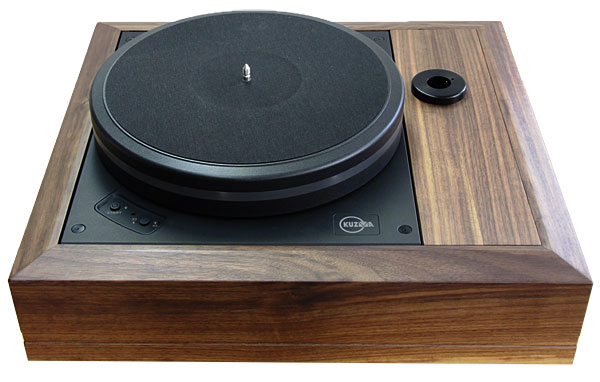
Kuzma Stabi R turntable
The R transformed the vinyl ritual in my system. Images became larger than life. The soundstage widened, deepened, and grew more spacious. Backgrounds became blacker. Dynamics increased as well. Every record, even ones I don't like all that much, became events. Older records have become dearer to me as new ones take over my apartment.—Ken Micallef

SVS SB-3000 powered subwoofer
Subwoofers get a bum rap from audiophiles. Yes, they're tricky to set up, though audiophiles suffer gladly for their passion. But a good subwoofer that's small, relatively inconspicuous, and punches well above its weight, like the SVS SB-3000, can turn a modest bookshelf or small tower speaker into something special.—Thomas J. Norton
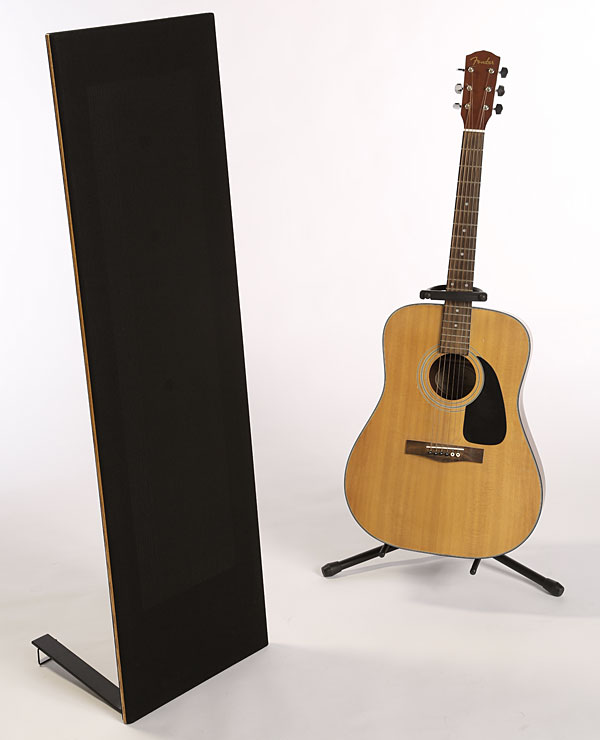
Magnepan LRS loudspeaker
Magnepan's new LRS quasi-ribbon panel speaker is a bushel short on deep bass and peck short on dynamic power—but it is absolutely the clearest, lowest-distortion window into a recording I have encountered . . . maybe ever. Before I finished my review, I knew I'd be nominating it as Product of the Year.—Herb Reichert
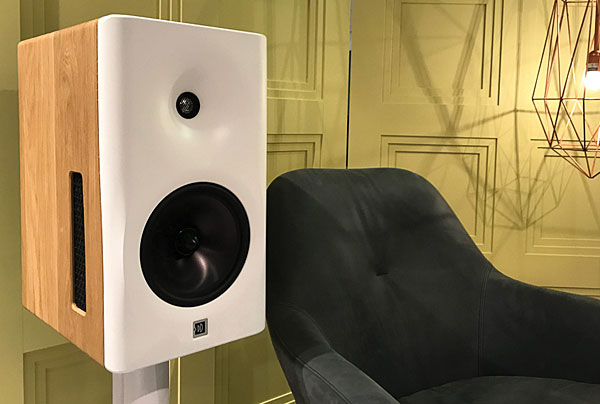
Dutch & Dutch 8C active loudspeaker system
With their controlled cardioid dispersion, they are relatively uninfluenced by room acoustics, and their built-in DSP provides for any tweaking desired. I just hooked them up to my network and enjoyed a sense of unlimited freedom playing 24/96 from Qobuz via Roon. These remarkable self-powered speakers don't just sound spectacular; due to some very smart acoustical and electronic engineering, they also usher in an era when one can have the convenience of "lifestyle" smart speakers with true audiophile performance.—Kal Rubinson
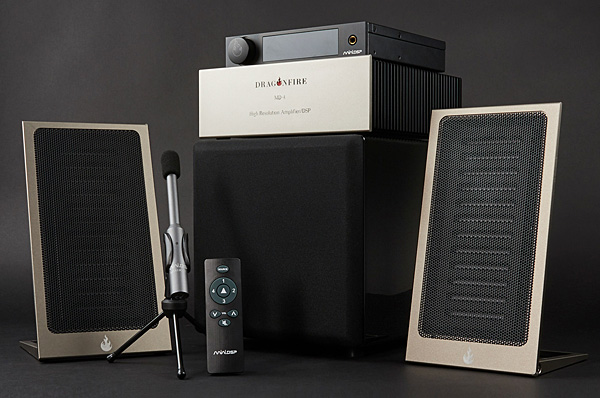
dCS Rossini Transport & Dragonfire Acoustics Mini Dragon DFA 2.1 desktop playback system
Two products I've reviewed this year have become indispensable references. Just last night, I was comparing the sound of "Red Book" FLAC files of Patricia Barber's Higher to her CD played on the Rossini upsampling transport and marveling at how great the Rossini sounds. With the Mini Dragon system, I finally have a highly resolving and involving full-range desktop system that I can trust when I review recordings. Both products set a new benchmark in their price range and class.—Jason Victor Serinus

A $50,000 tone Arm is within reach ??? ( is there gravity on the Planet you live on ? )
On the whole, vinyl is well-out of reach for todays households.
Tony in Venice

Sarcasm, buddy. Clearly he's being sarcastic. The products recommended here are crazy.


Just admit it. (and there are plenty of good, affordable LP/vinyl products)

Trolls suck harder. ;-)

I suppose Trolls suck harder. But considering that the vast bulk of LPs now being manufactured are derived from digital sources, this revival of an outdated format has turned into a costly and pointless farce. Tony is right, on what planet does a $50,000 tonearm make sense anyway?

I'm waiting for $100,000 'Mag-Lev' tonearm, which would defy gravity, to make it to the recommended components list :-) .......

Robin,
You've offered a fairly common but unfortunately short-sighted analysis of the appeal of vinyl records.
First of all, for those who really care about analog masters, there is obviously a VAST amount of legacy vinyl available in the second hand market, whether at record stores, on-line or whatever.
But that is actually beside the point I would want to make.
To think that one must seek vinyl records from analog masters, otherwise it's a "pointless farce," is to misunderstand the appeal for many record buyers. You don't have to be a dogmatic analog-source-audiophile to enjoy vinyl. Much of the pleasure is the physical/aesthetic aspects of vinyl. And the pleasure of physical turntables, and owning a physical music collection. And the way many people (not all, not you apparently, but many) find the whole physical aspect connects them to the music differently. I'd been streaming my ripped CDs, and Tidal, for quite a while but found that with countless songs at my fingertip I tended to "surf" music rather than listen intently as I used to, skipping from track to track, often not even listening to a whole song. Getting back in to vinyl cured that "Music ADD" and if I put on a record I inevitably sit to listen to a full side, if not the whole album. I'm not in that fidgety "surfing music" mode and I like the experience better.
Many in to vinyl, from older folks to millennials to even young people have mentioned similar experience from the effect of getting in to vinyl.
None of that requires analog masters.
And on a purely sonic level, even the idea that a digital master for an LP is silly doesn't hit a bullseye. First of all, the sonic quality of any record will be determined by the sonic quality of the master. Analog masters obviously don't guarantee good sound. There's tons of crappy sounding LPs from analog masters. I have a vinyl collection from both analog and digital masters, and the sound quality is not dependent on "analog master or digital master" but on the quality of the mix/engineering/mastering itself. If it's great sound from a digital master, then I get great sound ALONG with all the physical pleasures of the vinyl experience.
Further, even in the case of digital masters, vinyl STILL tends to sound a bit different than digital. There are different mastering moves made for vinyl, and the technology itself, getting that sound inscribed in vinyl grooves, getting it back off again via a stylus, turntable, phono stage etc tend to mean that some of the "vinyl distortions" accrue in the process once it makes it's way to your speakers. And people can still find those vinyl distortions to be pleasant. I have a number of vinyl albums made from the same original digital mixes as my CDs, and in comparing them I have often enough preferred how they sounded coming off vinyl (a bit more vivid, a bit more texture, a bit more "pop out of the speakers" effect). So, preference still has something to play with here.
I hope this clears up for you why vinyl isn't made "pointless" by the fact lots of new vinyl comes from digital masters. Maybe for you, if you were dead set on analog masters, but it doesn't follow that everyone's enjoyment of vinyl would turn on such a dogmatic point.
Cheers.

Lotsa of obfuscation goin' on here.
I don't care if the the source is analog or digital.
I do care that the playback is in tune, is consistent in sound from beginning to end. LPs fail, consistently, in both regards. It's inherent, incurable, and to these ears, unavoidable. All records are off-center, it's only a question of degree. All LPs lose energy from the start of the groove all the way to the end. It's unavoidable. One has to learn to listen around these issues. You say it's going to sound different, I say it sounds different because it's distorting. I see no reason why I should put up with this anymore.
But the fact that the source, usually digital these days, is superior to the LP, is unavoidable. Energy goes downhill. That doubly applies as regards LPs.

Robin,
"Lotsa of obfuscation goin' on here. "
Not at all. What was actually going on was clarifying issues you were ignoring. You were the one who claimed that vinyl from digital masters was "pointless." I made the case for why that simply doesn't take in to consideration all the reasons people enjoy collecting vinyl. You haven't provided any counter argument, only another form of the same rant, ignoring everything I wrote.
"You say it's going to sound different, I say it sounds different because it's distorting."
Correct! Did you not see that's exactly what I wrote? Vinyl *distortions.*
And sometimes I, and many others, actually enjoy the sound that particular distortion creates. Can you not understand that other people may have different preferences from your own? That's the point I'm making and it's hardly "obfuscation" to make that real-world fact a point.
" I see no reason why I should put up with this anymore."
Who in the world is trying to force you to listen to vinyl???
You don't "have" to put up with anything. Just listen to what YOU like. Just don't pretend what YOU like is THE standard for what is rational for anyone else to like.
It's always fascinating to me that a subject like vinyl records make some people so steamed they can't seem to think beyond their own desires to imagine how a product fulfills other people's interests and goals.

One more time.
LPs have inherent, uncorrectable design flaws. Nothing can fix them.

Ok, as you don't seem open to actual conversation where you respond to what someone has written. So be it.
Perhaps a well-designed moat around the house will protect from all those vinyl albums out to get you ;-)

You folks aren't all that interested in reality:
https://www.sageaudio.com/blog/mastering/what-is-mastering-for-vinyl.php
"The Physical Limitations of a Vinyl Record:
The secrets of mastering for vinyl lie in the specific limitations of the physical vinyl record itself, and the cutting process used to create it.
Let’s address the potential issues stated above. Again, they are:
Varying degrees of distortion
Skipping needles during playback
Lacking dynamics
An overall less pleasant listening experience
Varying Degrees of Distortion:
When is comes to vinyl record cutting, a general understanding of the physics behind the process is needed.
I won’t be exploring the science too deeply, since the information is vast, complex, and may not directly help answer the questions posed earlier.
So here briefly is an explanation as to how the potential for future distortion occurs during the cutting process, and how that distortion occurs during the playback process.
First it must be understood that the physical shape of the vinyl disc causes a varying rate at which the information can be cut into it.
. . .
The circumference of the record is greater along the outside, than on the inside.
In other words, when a record is being cut, and also during it’s playback, the greater circumference of the outside of the record allows for a greater surface area to be cut.
Since the lathe, and playback system rotate the record at a unchanging rate, and the surface area becomes smaller the closer to the inside of the record the needle gets, the velocity of the needle slows down significantly.
On the outside of a record, the needle or lathe’s cutter moves at roughly 20 inches per second. But on the inside, the needle or lathe moves are roughly 8 and 1/2 inches per second.
Sonically and technically, this would be very similar to reducing the tape speed of a tape machine from 15 ips to about 3 and 3/4 ips.
. . .
Notice the speed functions on the lower right side of this tape machine.
In a more modern example, this is similar to reducing the sampling rate of a digital recording from 96kHz to 22.05kHz.
In all of these examples, you’d be able to notice a significant decrease in the replication of the high end or the high frequency range.
This is precisely what happens to a vinyl record. As the surface area is reduced, the ability to both create and playback high frequencies is significantly reduced.
. . .
By the time the lathe needle reaches the center of a record, 15kHz has been attenuated 3dB.
Furthermore, the amount of distortion created during the cutting process, directly corresponds to the amplitude of the high frequency signal at these low surface area, inner record parts.
Because the surface area is limited closer to the center of the record, the lathe must work harder to cut higher frequencies. If the needle works too hard, it will jump out of its groove, causing hissing and distortion.
Due to this physical limitation, it is imperative that the level or amplitude at which the record is cut be closely monitored, and uniform across the entirety of the record.
This is why the track list of a vinyl record needs to be carefully planned.
Typically, softer tracks with a lower integrated amplitude are placed closer to the center of the disc, while the louder more aggressive tracks are sequenced farther to the outside.
Again, the additional surface area along the outside of the record allows for more information to be cut without resulting distortion.
The smaller surface area, and subsequent cutting speed of the center, lends itself to increased distortion at high amplitudes."
In other words, a modern master has to be compromised in order to be turned into an LP. LPs are nowhere near the current state of the art. That makes ultra-high priced LP playback gear a waste of money, as the results will never be as good as what is possible by simply back the digital master on digital gear.

Robin wrote:
"You folks aren't all that interested in reality:"
Actually, it's you who refuses to interact with reality: the reality of what I have actually written in my responses.
Can you point to one single thing that I have written that is untrue? Of course not. Which is apparently why you continue to ignore it.
Yet again, you just posted a long list of the ways the vinyl-making process can accrue distortion (deviation from the original signal).
In other words, you've just repeated WHAT I ALREADY WROTE TO YOU. Do you remember me writing this just above your own comments?:
RH wrote: "Further, even in the case of digital masters, vinyl STILL tends to sound a bit different than digital. There are different mastering moves made for vinyl, and the technology itself, getting that sound inscribed in vinyl grooves, getting it back off again via a stylus, turntable, phono stage etc tend to mean that some of the "vinyl distortions" accrue in the process once it makes it's way to your speakers."
Once sonic deviations are introduced by the vinyl-making process, preference can play a role, and some people can find they like the sound of vinyl.
As I said, I have compared the vinyl version to the digital version of various albums (from the same digital recordings/mixes), and have sometimes preferred the way it sounded on vinyl. Sometimes I prefer the digital.
Try for a moment not taking the stance of a know-it-all out to educate people who you presume to be ignorant, or declare to be uninterested in facts, and try actually reading and interacting with the content of what is being written back to you.
It's the intellectually honest way to have a conversation and makes for much better comments.

" . . . It’s as if the Age of Reason – the era of evidential argument – is ending, and now knowledge is delegitimized and scientific consensus is dismissed.”
Sascha Baron Cohen, November 21, 2019

Somebody needs to come up with climate change proof (just like future proof) audio equipment :-) ......

Perfect sound forever?
Digital is far from being a flawless technology. But kudos to you, Robin, for ignoring that fact and oppressing everyone with your beliefs.
I am reminded of an anecdote about cd's when they first came out.
There was a person who ran music therapy classes for people with autism and he always used lp's as that was the tech available. When cd's came in they switched and started playing digital music in the therapy sessions. The patients who were used to relaxing time in therapy now were agitated and nervous.
The music was not therapeutic at all. Big problem/
There is simply something more amenable to the human ear about an analogue generated signal that presents differently than a digital signal. To deny otherwise is not realistic.
Of course, you can have any technical argument you want, and keep your preferences. But to deny the validity of a format in the face of reality is ludicrous.

billyb,
I'm a fan of vinyl, but I'm no fan of dubious claims made on it's behalf.
All other things being equal, digital is capable of greater accuracy. Whether one prefers that accuracy is a different question.
A problem occurs when those audiophiles who have their own *preference* for vinyl (as I often do), project that preference as if it were some objective, intrinsic quality inherent in vinyl itself. And so you get these anecdotal stories like you gave in support of the idea, and the claims about "analog being more natural" which "explains" why "people like analog better."
That's just projection.
Humans have been enthusiastic listeners of both vinyl and digital.
You will get *some* audiophiles saying "I never liked digital!" But you will hear from many who switched from vinyl to digital and never looked back, being happier with digital sound, and enjoying digital every bit as much as any vinyl enthusiast.
The HEIGHT of music sales occurred during the CD age! So digital hardly turned human beings off enjoying music!
Millions (billions) of people around the world listen to digital sources and enjoy music. My sons are big music fans and they can love their music through their laptops or phones. My youngest (17) often requests music on my 2 channel rig. Sometimes I'll spin vinyl of songs he likes, other times stream from Tidal. He doesn't give a d*amn what the source is, he responds enthusiastically to the music.
It's mostly some small percentage of audiophiles who hold to this "I just can't listen to digital, it's not musical" mindset. It isn't actually reality for humans in general. (And on technical grounds, there is no reason to expect otherwise).

Every product considered between November 2018 and October 2019, in a review or in a column, was on the ballot distributed to Stereophile's writers, and so was indeed "a candidate." That includes the Bartok, which I reviewed favorably in the October 2019 issue. On the strength of that review, it was placed in Class A+ of Stereophile's list of Recommended Components. However, it was not among the finalists for Digital Source for 2019's Product of the Year.
For reasons hard to fathom, reviewers vary in their tastes from year to year. This year, they seemed to be more budget-minded than in some previous years--notice that the winner in that category was a much less expensive streaming DAC, the Mytek Brooklyn Bridge. Whatever the reason for this orientation toward value among 2019's voters, perhaps it helps explain why the Bartok did not make the finals.
Jim Austin, Editor
Stereophile

May be JCA could also do a follow-up review of the new multi-function Bryston BDA-3.14 DAC/streamer/pre-amp ($4,200)?:-) .........

????? McIntosh MC462 power amplifier was chosen by Sasha Matson. (And, although I picked the D&D 8c's as my Editor's Choice, I bought the Benchmark amps.)

"And, although I picked the D&D 8c's as my Editor's Choice, I bought the Benchmark amps."
Just to state something unstated in your comment, if you are going to review loudspeakers and components, you need a highly modular system that allows swapping those in/out of the playback system. Active loudspeakers such as the DSP active D&D-8C may offer very good performance, but the highly integrated nature is seemingly too inflexible for use in a reviewer's system.
So I think your choice of Revel Ultima Studio2 loudspeakers and Benchmark Media AHB2 amplifiers was a better choice for your application. But for a reader desiring a good music playback system attached to a server through a wired Gigabit Ethernet network, a pair of D&D_8C in combination with a low frequency subsystem could be a very good choice.

JRT, your comment reminds me of a reviewer on an AV site who tended to review speakers after applying DSP and adding subwoofers. (And this isn't a comment on Kal's system btw).
I and many others found that quite frustrating as it left us wondering what the speakers sounded like without those additions, which is how many people would use the speakers.
I have no problem with a review describing speakers having been DSP'd/EQ'd (or adding subs). So long as the speakers "out of the box" performance is first described. Robert E. Green of TAS often described the sound of review speakers corrected with EQ, after first describing them uncorrected. That's helpful because it tells you both the native sound of the speaker and whether the defects heard by the reviewer were susceptible to correction.

REG from TAS and TJN on Stereophile, always describe the sound of the speakers 'as is' without EQ/DSP/subwoofers ........ If they use EQ/DSP/subwoofers with those speakers, they describe their sound after using them, also ....... Of course, this applies only to passive speakers :-) ........

JCA describes the sound of the Revel Salon2 speakers before and after using SAM in the Dec. 2019 issue of Stereophile :-) .......

as his room is not your room and the sound would be way different anyway. Dr. Kal is taking the approach of making things work in his room using any and all tools at his disposal, which you could do as well with the speakers you currently have. I think room correction is what more people need, but buying better speakers than what one has is never wrong.
All the speakers in this list are so different from each other that it is clear that we all hear different and have different tastes in what is "right sounding" to them.

I and many others found that quite frustrating as it left us wondering what the speakers sounded like without those additions, which is how many people would use the speakers.
Sure. That would be much more informative if they planned to use them in the same listening room as did the reviewer. :-)

Kal,
Just so I understand the point of your comment:
Do you mean to imply that a review of a room corrected (DSP, whatever) speaker would be more informative, insofar as it would take the room out of the equation so you hear what "just the speaker" sounds like? (In principle anyway).
Your comment seems to suggest that typical speaker reviews (not using room correction) are not very useful or informative about the general character of a speaker. Is that what you mean?
Thanks!

Do you mean to imply that a review of a room corrected (DSP, whatever) speaker would be more informative, insofar as it would take the room out of the equation so you hear what "just the speaker" sounds like? (In principle anyway)
Possibly, but such corrections do more than affect just the room's influence but they also correct the speaker's response at the same time. In addition, I believe that the majority of Stereophile readers do not want to and/or have suitable EQ in their systems. So, it is a moot point.
Your comment seems to suggest that typical speaker reviews (not using room correction) are not very useful or informative about the general character of a speaker. Is that what you mean?
If everyone had effective DSP/EQ with a common target curve, there would be more value to report with such in place but, vide supra, that is not the case.

Thanks.
Not sure how to interpret your final paragraph, whether it was essentially a "yes" or a "no."
Do you believe reviews of speakers which have not been room-corrected are still of use? That is, that some measure of the speaker's character can be discerned?
My feeling is "yes." (With various pretty obvious caveats).

My feeling is "yes." (With various pretty obvious caveats).
I think you can say that about both alternatives.

So I think your choice of Revel Ultima Studio2 loudspeakers and Benchmark Media AHB2 amplifiers was a better choice for your application. But for a reader desiring a good music playback system attached to a server through a wired Gigabit Ethernet network, a pair of D&D_8C in combination with a low frequency subsystem could be a very good choice.
Yeah, sure and discussed before.

My nominations for 2020 products of the year awards ....... So far :-) .......
* Devialet Expert Pro with SAM, integrated amp .......
* Manger p1 loudspeaker ........
* RAAL SR1a ribbon headphones ...........
2020 budget components of the year ....... So far :-) .......
* AudioQuest DragonFly Cobalt DAC/headphone amp ...........
* JBL Stage A170 loudspeaker .........

2020 ultra high-end component(s) of the year (only for ultra high-end audiophiles) ....... So far :-) .......
* darTZeel NHB-468 amplifiers .........